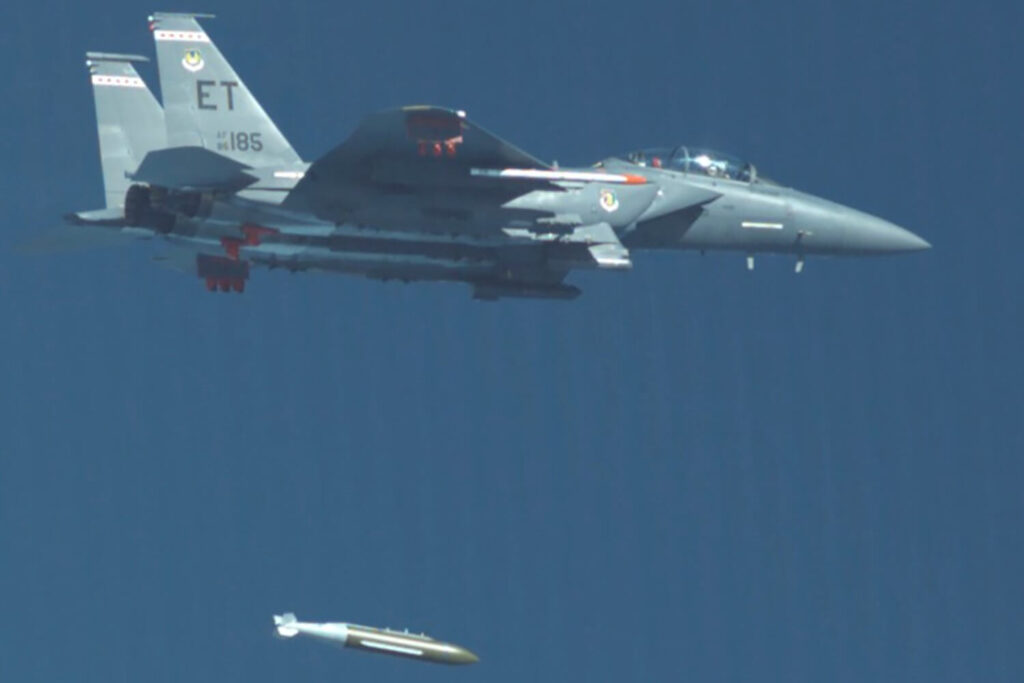For the first time, an F-15E Strike Eagle released a GBU-72 Advanced 5K Penetrator bomb.
The test, which was reported by the United States Air Force on October 12, 2021, was deemed successful. It marked the conclusion of a series of tests to integrate the new ‘bunker buster’ weapon into the arsenal of the USAF.
The drop involved an F-15E of the 96th Test Wing flown by the 40th Flight Test Squadron. It took place at Eglin Air Force Base range in Florida on October 7, 2021.
The GBU-72 was designed to be employed by both fighter jets and bombers. Its main objective is to “overcome hardened deeply buried target challenges”. It will act as a replacement for the laser-guided GBU-28, a 1,800-kilogram bomb developed in the 1990s.
The bomb is composed of a BLU-138 penetrator warhead combined with a joint-direct-attack-munition (JDAM) GPS tail kit, for a total weight of 2,300 kilograms (5,000 pounds.)
A JDAM allows for the conversion of a regular gravity bomb into a more precise GPS-guided munition. The tail kit, usually meant for 900-kilogram (2,000-pound) munitions, was modified and tested to see if it could also control and navigate a 2,300-kilogram weapon.
“The weapon design and its projected effectiveness were developed using advanced modeling and simulation techniques and processes before the first warhead was forged,” the USAF commented in a statement.
The GBU-72 will provide a lighter, more available alternative to the GBU-57 Massive Ordnance Penetrator (MOP), a 13-ton (30,000-pound) bomb that can only be operated by the B-2 Spirit stealth bomber. The exact list of platforms that will be capable of employing the GBU-72, in addition to the F-15, is unknown.
With the first test drop proving successful, the program will move to further integration test flights and developmental and operational testing in 2022.
(U.S. Air Force photo)
